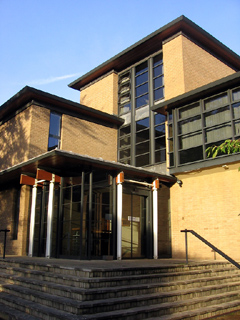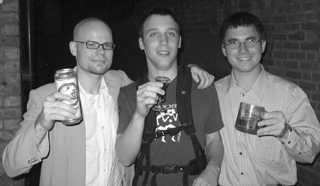Tomorrow begins another busy week. I need to finish preparing my presentation on West African fisheries for the Wadham Research Forum tomorrow night. While I appreciate the chance to proselytize a bit on this important subject, I am somewhat nervous about being the only grad student presenting to a clutch of dons; hopefully, none will be international lawyers with precise questions about the interpretation of statutes.
The next order of business is reading for this week’s Developing World seminar. Tuesday brings CCW and OUSSG, then I have GEG on Friday (a life dominated by acronyms). Wednesday is the fourth OxBloggers’ gathering.
Next Tuesday – how very close at hand – are the American midterm elections. As with all North American elections experienced in UK time, they promise a night as late as last one was. The next day, I am going to London to see Sarah, attend a private viewing of the William Townsend exhibition, and buy a new iBook battery.
That weekend (Nov. 10-12), Gabe will be in Oxford for a debate tournament, possibly sleeping on my floor along with his debate partner, and certainly in need of getting one of my reasonably comprehensive Oxford tours. That said, there seems little chance of turning up my missing Codrington Library card before then.
Then, it is just three more weeks until the end of Michaelmas, the arrival of my father in the UK, and our December 4th departure for Turkey. We get back on December 16th: leaving me with the rest of the break, one more term, and one more break to finish the thesis (17 more weeks).
After that, there are eight weeks of studying for our final examinations, the completion of the same, and the beginning of my not-so-phased withdrawal from the UK. Beyond that, the future is truly uncertain. There is certainly some temptation to stow my remaining possessions with an accommodating friend and make one more interesting foray to the continent, before my return to North America. I have no reason to think finances will allow the mooted Kilimanjaro climb to go forward. Unless my student loan appeal succeeds, tricky questions will remain about funding the rest of this year.






